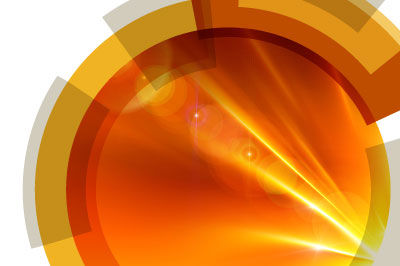The Royal Society of Chemistry is pleased to announce that this event will be moving online.
Welcome
Join us in September 2021 for this addition to our Faraday Discussion series. For over 100 years and 300 meetings, Faraday Discussions have been the forefront of physical chemistry. Many of these Discussions have become landmark meetings in their field.
We invite you to join us to discuss the topic of peptide-membrane interactions and make your contribution to this cutting-edge dialogue alongside leaders in this field.
This meeting is for established scientists, post-graduate students and industrial researchers interested in the fundamental questions of cell biology including how peptides and proteins behave within biological membranes. Given the importance of improving our understanding of how macromolecules such as peptides interact with membranes, the unique format of the Faraday Discussions will allow for in-depth discussions and opportunities to establish new collaborations.
On behalf of our committee, we look forward to welcoming you.
Paul O’Shea
Chair, Peptide-membrane interactions
Format of the Discussion
Faraday Discussions remain amongst the only conferences to distribute the speakers’ research papers in advance, allowing the majority of each meeting to be devoted to discussion in which all delegates can participate. Following each meeting a written record of the discussion is published alongside the papers in the Faraday Discussions journal.Find out more about the Faraday Discussions in this video:
Scientific Themes
It is difficult to overstate the importance of improving our understanding of how macromolecules such as peptides interact with membranes as this is such a fundamental aspect of how living systems operate. These processes are involved in protein folding, cell signalling, biogenesis, morphogenesis, disease and medical therapy. Next-generation synthetic biology goals will require a clearer understanding of how to control reticulated membrane structures in order to fabricate the supramolecular structures necessary for advanced synthesis and behaviour.The molecular questions that require clarification and their solutions bridge the many divides between the fundamental physical chemistry of macromolecular polyelectrolytes and the supramolecular chemistry of membrane assemblies related to cell biology as well as drug development and synthetic biology. This Discussion meeting will seek to establish a sound platform for further developments in this important field by addressing several related aspects of peptide interactions with membranes. It will consider model theoretical and experimental systems in order to define the ‘reaction space’ that is possible and where appropriate with relevance to fundamental questions in cell biology including how peptides and proteins behave within biological membranes
The Discussion will focus on the following four themes:
Theoretical and experimental comparisons of simple peptide-membrane systems; towards defining the reaction space
With recent advances in computational modelling, it is now feasible to model membranes that can deliver realistic representations of multi-lipid assemblies and the interactions of peptides with these structures with atomistic detail seems also within reach. Similarly, there are many experimental tools to measure the interactions of macromolecules with membranes to a high degree of accuracy. By bringing these together this session will provide a sound platform to define the parameters and complete ‘interaction space’ of how peptides (and proteins) interact with lipid bilayers. This session will address the simplest membrane and peptide interactions in order to build a clear picture of the limiting molecular properties of the respective interactions as well as defining some of the outstanding questions that need to be considered in more sophisticated systems.
Theoretical and experimental studies of complex peptide-membrane systems
Consideration will be given to more sophisticated membranes such as those that include membrane nanodomains (rafts) together with more complex peptides and how they interact together. Combinations of atomistic and coarse-grain (eg Martini) modelling approaches offer detailed structural and thermodynamic representations of the properties of membranes that are likely to approach the complexity of biological lipid assemblies relatively soon. Some of the experimental measurements of monomeric peptides forming massive molecular assemblies on membranes (such as pore forming structures) however, are poorly understood. These are major challenges as supra-molecular assemblies on and within membranes are vitally important for both biotechnology and understanding the mechanisms of disease. The interplay between how membranes may modulate the structure of proteins/peptides on and within membranes and vice versa are key questions that will be addressed.
Behaviour and interactions of proteins and peptides with and within membranes; from simple models to cellular membranes
The behaviour of peptides and proteins within membranes will be considered further in this session. Discussion in the first two sessions will have set the scene for considering how peptides may interact with the much greater sophistication that comes with biological membranes. It will also be important to consider this in context of the still ongoing debate regarding membrane nanodomains. Similarly, it is crucial to take into account that these interactions take place within the biological milieu. Thus, excluded volume effects and molecular crowding need to be considered as important modifiers of the thermodynamics and kinetics of any kinds of molecular interaction. This session then will introduce some of the needs of industry and medicine such as the development of effective anti-microbial peptides that function by targeting bacterial membranes.
Peptide-membrane interactions and biotechnology; enabling next-generation synthetic biology
This session will consider how the properties of membranes may be manipulated by the presence of peptides. Thus, the rules for determining spatially localised behaviour in which modification of local properties of a membrane will be explored. This would include aspects of membrane curvature, tension, charge and fluidity each of which can affect the properties of membrane-located peptides and proteins. The final stages of the Discussion meeting then address how many of the membrane properties that seem likely to be important for manipulating supramolecular assemblies will be important for next generation synthetic biology applications.













